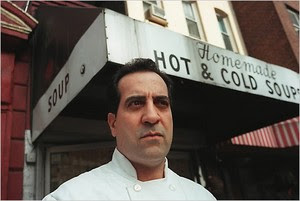Jon Kessler, Noriko, 1994. Plexiglas, aluminum, screenprint on cloth, duratran, mixed media with lights and motors, 47 x 31 x 26 inches
Sculpting with Light
As published by The Queens Times Ledger on Friday November 26, 2010
Original Link: http://www.yournabe.com/articles/2010/11/26/astoria_times/ent_news/at_ent_news_kessler_20101125.txtLONG ISLAND CITY -- Jon Kessler, a New York artist who has become known in recent years for his anti-war installations, has mounted a career retrospective exhibit at the Fisher Landau Center for Art in Long Island City, with 12 pieces spanning nearly 20 years of sculptural objects made from a variety of media.
Among the pieces on display is “Iron Curtain” (1983), the first of his anti-war sculptures. The sculpture uses lights and motors to reveal the forms of plastic soldiers.
“Iron Curtain” is from my first show in New York in 1983, and ‘The Outsider’ is from 1999, and was the last piece that I exhibited before I made a big shift in my work and started making video sculptures,” Kessler said. “This work really does capsulate the idea of the early work of the ’80s and the ’90s.”
Kessler said he wanted to show these particular artworks because a lot of people are not familiar with his work from past decades. In recent years he has gained a whole new audience who were eager to make connections between his later works and his earlier works, he said.
“What was interesting about doing this show is that each one of those pieces really captured something I was going through. I could identify each one in a voyeuristic way,” Kessler said.
Some of the pieces on exhibit were made during a five-year period when Kessler lived in Paris. He said he does not have a favorite piece, but each one does capture very personal experiences Kessler was going through when he embarked upon their creation.
The curator of the exhibition, Nicholas Arbatsky, describes why these particular artworks are on display.
“I’ve known Jon’s work for 25 years and the first pieces I saw of his involved these [pieces on display]. It was a show at the museum of Contemporary Art in Chicago and there were computers and lights and army men flashing around the gallery, very similar to what he’s doing now. I thought way back to the show because it was lodged in my memory.”
Arbatsky said the exhibition shows how Kessler’s sculpture has evolved. “His sculpture has progressed from very basic beginnings with light and technology taking on more computer systems, almost taking on a minimal light balance, sculptural attitude.”
When viewers leave the exhibition, Kessler said he hopes they have gained an understanding of some of the ideas behind his work.
“I want them to be fascinated with the mechanisms and the poetry and the visual language. I’m hoping that they see connections in the works even though they do span more than 15 years of work,” Kessler said.
Philanthropist Emily Fisher Landau sponsored this exhibition through the Columbia MFA Thesis Program. The exhibition is free and open to the public and runs until Jan. 3.
If You Go
When: Monday to Friday, noon-5 p.m., through Jan. 3.
Where: Fisher Landau Center for Art, 38-27 30th St., Long Island City
Contact: Sydney Masters sydneymasters2@yahoo.com 718-937-0727
Web site: www.flcart.org
















